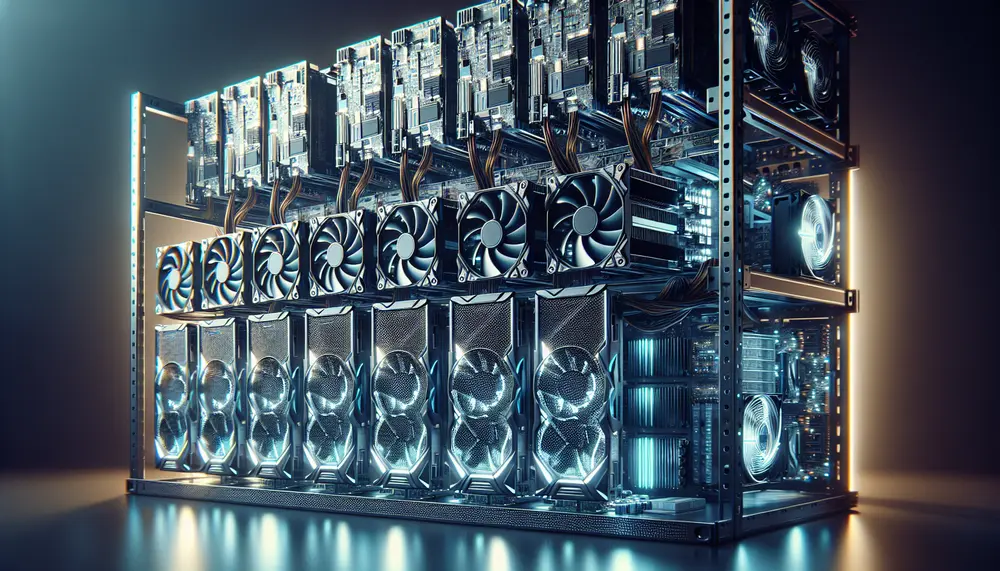Application-Specific Integrated Circuit
Application-Specific Integrated Circuit
What is an Application-Specific Integrated Circuit (ASIC)?
An Application-Specific Integrated Circuit (ASIC) is a type of hardware used in Bitcoin mining. This device is engineered to perform a specific operation and is highly efficient at it. Unlike general-purpose computer hardware, ASIC devices are built for a singular task: solving complex mathematical problems to validate and add transactions to the Bitcoin blockchain.
Why is ASIC Important in Bitcoin Mining?
ASIC's importance in Bitcoin mining lies in its efficiency and performance. To successfully mine Bitcoin, miners need a machine with high computational power. Unlike CPUs and GPUs, which are designed for multitasking, ASICs can perform their specific task much faster and consume less energy, which is a key factor in profitable Bitcoin mining.
Advantages of ASIC Mining
ASIC miners come with several advantages. Firstly, they offer a much higher hash rate (computational power) compared to other mining hardware. This means they can solve complex mathematical problems faster, increasing the chances of winning the Bitcoin mining reward. Secondly, even though they are powerful, ASICs are small in size, making them space effective. Finally, they are more energy-efficient, a significant factor considering the high energy costs associated with Bitcoin mining.
Disadvantages of ASIC Mining
Despite their advantages, ASIC miners also have downsides. For one, they are expensive, which might limit accessibility for small-scale miners. Another drawback is their lack of versatility. Unlike GPUs and CPUs, ASICs can't be repurposed for other tasks. This means if the specific cryptocurrency they are built to mine becomes unprofitable, ASIC miners become useless.
The Role of ASIC in the Future of Bitcoin Mining
Despite the ups and downs, the Application-Specific Integrated Circuit is here to stay in Bitcoin mining. They continue to offer unparalleled computational power while becoming increasingly power-efficient, which will be significant for the future sustainability of Bitcoin mining. However, considerations like price and accessibility continue to be hurdles that will shape the future role of ASICs in Bitcoin mining.
Blog Posts with the term: Application-Specific Integrated Circuit

Cloud mining allows individuals to lease processing power from remote data centers for cryptocurrency mining, offering convenience and lower upfront costs but potentially reduced earnings and risks of scams. Hardware mining involves owning equipment with greater control and profit potential...

Dogecoin mining involves using computational power to solve mathematical problems, validating transactions and adding new blocks to the blockchain, with miners rewarded in Dogecoin. This guide covers the basics of Dogecoin mining hardware—CPUs, GPUs, and ASICs—and reviews top 2024 miners...

Bitcoin mining involves solving complex puzzles, requiring significant electricity consumption which impacts profitability; factors like hashrate, hardware efficiency, and regional electricity costs play crucial roles in determining energy expenditure. Technological advancements such as ASICs and smart software improve efficiency by...

This guide provides a step-by-step tutorial for building a powerful PC specifically designed for Dogecoin mining, covering essential hardware components like GPUs, CPUs, motherboards, PSUs, RAM, storage solutions, and cooling systems. It also explains the basics of Dogecoin mining including...

Bitcoin's mining reward system, which reduces rewards through halving events approximately every four years to maintain scarcity and influence market dynamics, plays a crucial role in shaping Bitcoin's value and technological evolution. These halvings impact supply by capping it at...

The article discusses the significant changes expected in Ethereum mining by 2024, focusing on the transition to Ethereum 2.0 and its shift from Proof of Work (PoW) to Proof of Stake (PoS), which will impact hardware requirements, energy efficiency, sustainability...

Tether (USDT) cannot be mined as it is a stablecoin issued by Tether Limited, pegged to the US Dollar and centrally controlled. Instead, you can earn USDT through trading, staking, liquidity mining on DeFi platforms, yield farming, or interest-bearing accounts....

The article explains the importance of understanding Monero mining pools and their hashrate distribution, highlighting how these factors affect network security and decentralization. It also provides a guide to selecting top Monero mining pools in 2024 based on criteria such...

The article explores the profitability of XRP mining, highlighting its unique consensus algorithm and how it differs from traditional cryptocurrencies like Bitcoin. It covers key factors influencing profitability such as transaction fees, network activity, hardware costs, energy consumption, market value...

TRX USDT mining involves using computational power to validate transactions on the Tron network, earning rewards in TRX and USDT. This guide covers everything from understanding these cryptocurrencies to setting up your mining operation, highlighting benefits such as profitability, diversification,...

Bitcoin mining has evolved significantly since its inception in 2009. The early days involved simple CPU mining, but as Bitcoin gained popularity and value, there was a shift towards GPU mining and eventually the introduction of ASIC miners. The process...

Litecoin mining requires specialized hardware known as ASICs, optimized for the Scrypt algorithm. This guide compares various Litecoin mining hardware options based on performance, energy consumption, and cost to help you choose the best one for your needs in 2024....

Crypto mining in India operates in a legal grey area, as there are no specific laws regulating or banning it, but miners must comply with general financial and electricity usage regulations. Despite the permissive environment, challenges such as high electricity...

The article provides an in-depth analysis of the profitability of Ethereum mining, covering essential factors such as costs (electricity, hardware investment, maintenance), and revenue generation. By understanding these components—power consumption rates, local electricity prices, necessary hardware like GPUs or ASICs,...

